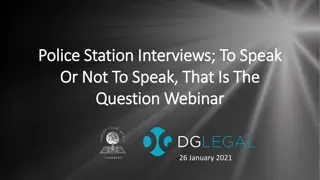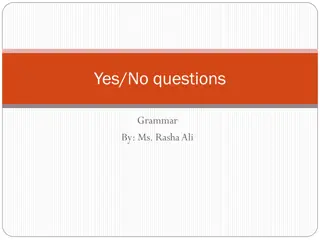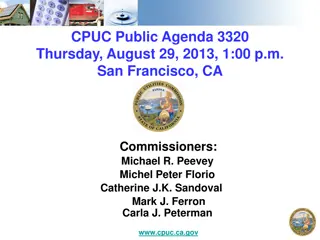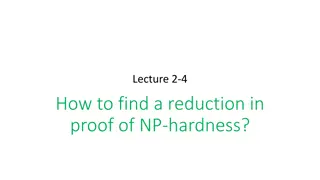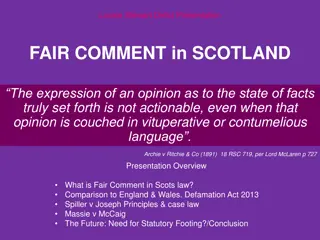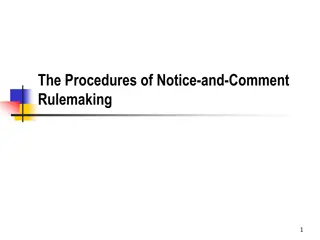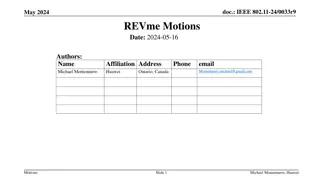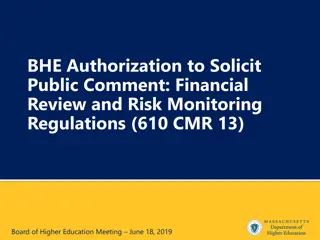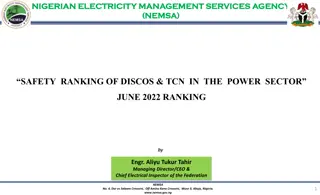
Analyzing Market Reactions to OSII Assessments: Insights and Implications
This paper examines the impact of OSII status announcements on bank equity and CDS returns, distinguishing between stigma, opacity, and safety effects. It utilizes event-study methodology to analyze specific announcements and general trends, providing insights on market perceptions and regulatory changes. Recommendations for further analysis and considerations for future research are discussed in detail.
Uploaded on | 0 Views
Download Presentation

Please find below an Image/Link to download the presentation.
The content on the website is provided AS IS for your information and personal use only. It may not be sold, licensed, or shared on other websites without obtaining consent from the author. If you encounter any issues during the download, it is possible that the publisher has removed the file from their server.
You are allowed to download the files provided on this website for personal or commercial use, subject to the condition that they are used lawfully. All files are the property of their respective owners.
The content on the website is provided AS IS for your information and personal use only. It may not be sold, licensed, or shared on other websites without obtaining consent from the author.
E N D
Presentation Transcript
Comments on Market Reactions to the Assessment of Other Systemically Important Institutions Evan Kraft American University Dubrovnik, 4 June 2017
What this paper does Uses event-study methodology to look at the impact of announcements about OSII status on bank equity and CDS returns Covers European Banking Authority announcement of 25 April 2016, EBA stress test, G-SIBs announcement and inclusion in Single Supervisory Mechanism announcement Seeks to distinguish between three effects: Stigma effect identified banks are seen as riskier Opacity effect markets do not react because they learn nothing new Safe effect identified banks are seen as safer
What the paper does especially well Uses established event study based on methods seen in previous literature Uses multiple significance tests to deal with concerns that abnormal returns are non-normally distributed Is able to look at individual announcements as well as generalize about a set of announcements Analyses bank-specific outcomes
What more could be done: how the announcements worked More precise discussion of regulatory change and how they can be expected to affect market perceptions of valuation and default probability. Increased capital requirements are mentioned, but need some elaboration of ways in which supervision was tightened. Also, there is Systemic Risk Buffer. The capital requirements may be increased more under some circumstances. P. 7 Refer to a majority of academics but to explain the results of the actual regulatory changes one needs to look at main features of the regulations themselves, not the various proposals of economists More nuanced story Note that safe effect may actually be implicit subsidy Jamie Dimon comments on benefits of being a SIFI, Moeninghoff Ongena arguments
Results discussion P. 19 say that markets did not react to national announcements, but many of the coefficients are significant in the CDS results in Table 6.
Extending the analysis to include Too-Big to Save and Institutions Suggestion: add country s fiscal position to bank-specific regressions as in Demirguc-Kunt and Huizinga 2014. Can have separate effects for Europe-wide and national announcements Also could add country governance scores to see the effects of institutions as in Fratzscher, Konig and Lambert
Robustness Literature does not seem to have standards about the length of pre- event windows. Not clear if this was done. If not, try changing this as a robustness check. Also, how about changing the event window itself as a robustness check? If you did these and did not report them, tell the reader what you did without giving all the results. What you have done here is not clear enough.



